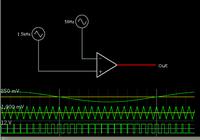pebe
Advanced Member level 4
You may find the following helpful:
"Electrical engineers will appreciate the difficulty of nubing together a regurgitative purwell and a supramitive wennelsprock. Indeed, this proved to be a stumbling block to further development until, in 1942, it was found that the use of anhydrous nangling pins enabled a kryptonastic boiling shim to the tankered.
The early attempts to construct a sufficiently robust spiral decommutator failed largely because of a lack of appreciation of the large quasi-piestic stresses in the gremlin studs; the latter were specially designed to hold the roffit bars to the spamshaft. When, however, it was discovered that wending could be prevented by a simple addition to the living sockets, almost perfect running was secured."
Find out more about 'wending' and your faultfinding problems will be over!
"Electrical engineers will appreciate the difficulty of nubing together a regurgitative purwell and a supramitive wennelsprock. Indeed, this proved to be a stumbling block to further development until, in 1942, it was found that the use of anhydrous nangling pins enabled a kryptonastic boiling shim to the tankered.
The early attempts to construct a sufficiently robust spiral decommutator failed largely because of a lack of appreciation of the large quasi-piestic stresses in the gremlin studs; the latter were specially designed to hold the roffit bars to the spamshaft. When, however, it was discovered that wending could be prevented by a simple addition to the living sockets, almost perfect running was secured."
Find out more about 'wending' and your faultfinding problems will be over!








